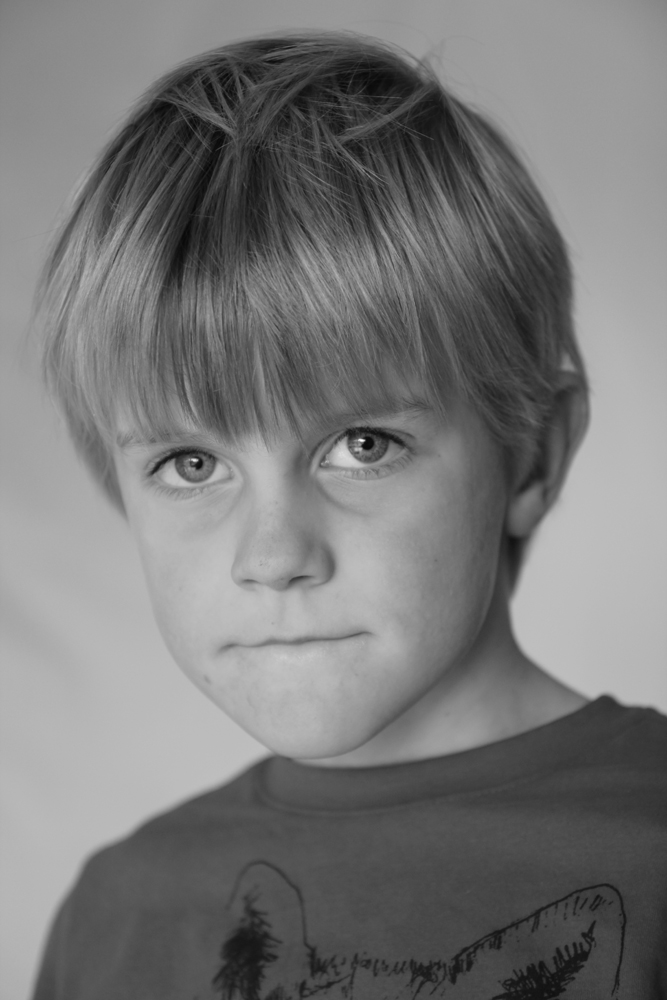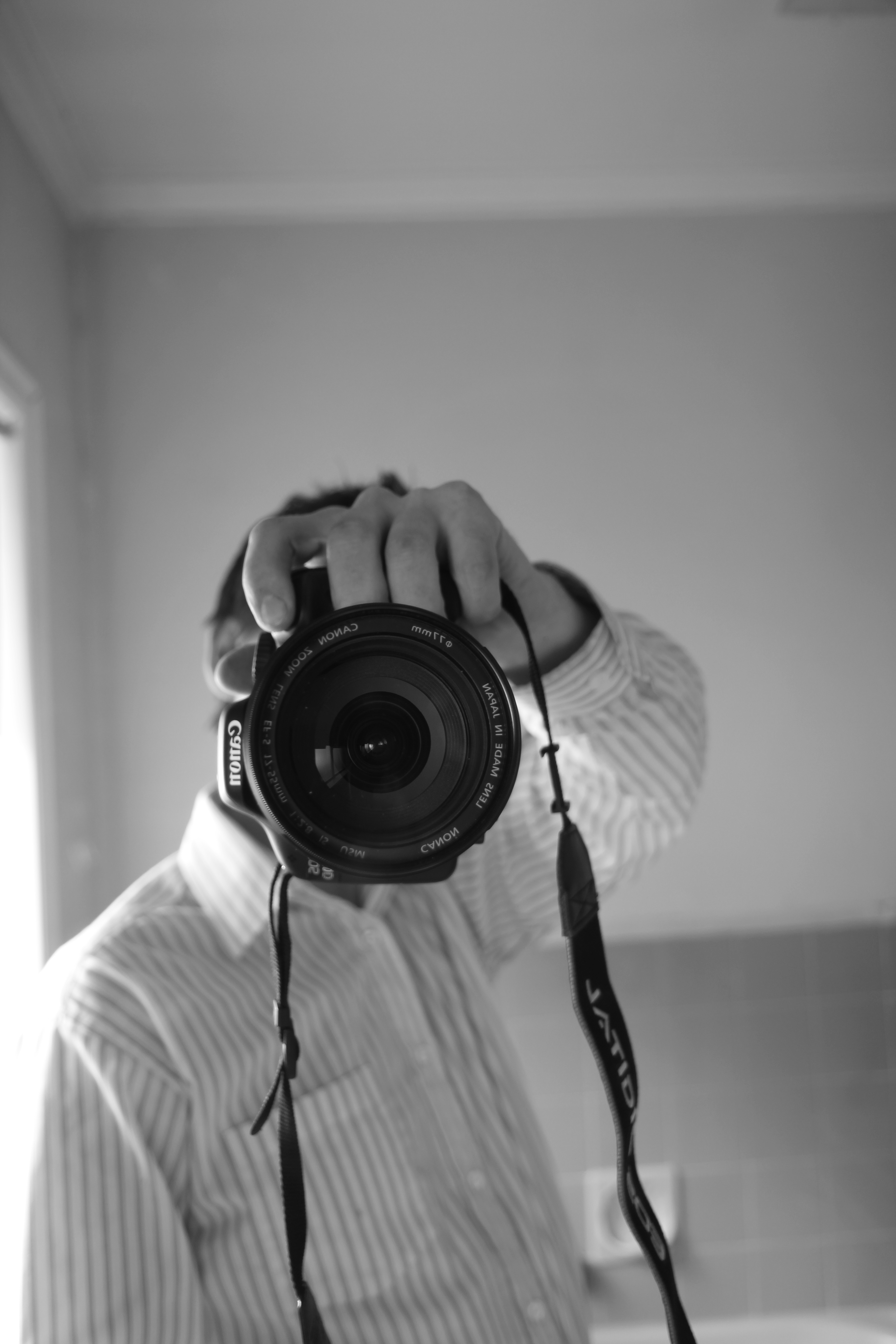My favourite photography to look at and to take is portrait photography. I love the idea of trying to tell a story, or capture an emotion in a single frame. I recently took a whole lot of portrait shots at a family get together, and I was really happy with some of them. So ‘I’m No Expert, But’ here are my tips for shooting portraits.
1. Light
If you have a studio and lights then you are probably reading this post on an ironic level…so I’ll just provide advice for the rest of us.
Use whatever natural light you have available. So if there is a window in the room, make sure the subject is facing towards it (and obviously avoid placing the person in front of the window, as all the backlight will make their face comparatively dark).
2. Shallow depth of field
A shallow depth of field basically means that one part of your shot is very clear, while the rest is blurred. To me this allows you to make the persons face the focus of the shot…everything else is just background. The lower the f-stop you use, the smaller the area that is in focus. My lens can go to 2.8 so that is what I use. Some lenses can get down to 1.4, some can’t get lower than 3.5.
The challenge with using a shallow depth of field is that while it means that you have one area beautifully in focus…you need to make sure that it is the area that you want. I have a dazzling array of photos where the person’s hair is in focus…or their ear. When in fact what you want to capture is…
3. The eyes
This is where the connection is for me. The mouth can be smiling…but the eyes will always tell the real story…so make them the focal point of the shot.
If you can, try to get some ‘light in the eyes’. If people are looking towards the light you will see a reflection of this light in their eyes, which adds an incredible sincerity to the shot.
Steve McCurry is a great exponent of this.
4. Camera settings
If you have the time and ability, then by all means set your f-stop, aperture and everything else manually.
Personally, I use the ‘CA’ (Creative Auto) setting on my Canon. Then use the following:
Flash: Turned off
Background: Blurred as possible (this is the shallow depth of field I was talking about)
Exposure: Leave as is unless it is really dark or sunny…and even then, just move somewhere else
Picture setting: Monochrome (I really like my portraits in black and white). But only do this if you can work with RAW files on your computer.
File type: RAW+L This will give you a RAW file (in full colour) and a JPG in black and white (if you’re in the monochrome setting). A lot of people will tell you to shoot full colour and then desaturate the image to make it black and white. But I personally like to see the image in black and white as I shoot it…and if I suddenly need a colour version, then I can just save the RAW file as a colour jpg.
Shooting: Continuous (people’s expressions change in the blink of an eye…so it’s worth shooting a whole lot of shots, to get that one moment where you have captured something special).
5. Put yourself in their shoes
Imagine you are sitting in front of a camera, unless you are an extreme extrovert, you are going to be feeling a bit nervous…the photographer takes the photo, then says ‘No, that didn’t work’ or ‘We’re going to have to do that again’. How do you feel? I’m going to guess ‘not so great’. As the photographer you may have meant ‘I didn’t quite get that right’, or ‘I’ve got to change my settings’…but the damage has been done. You are now very unlikely to get a great shot of this person because that are going to be feeling awkward or self-conscious.
So always put yourself in the shoes of the person you are taking the photo of…if you wouldn’t like someone doing something to you, chances are they won’t like you doing it to them. And from a purely selfish perspective, you are going to get a much better photo of someone who is happy to be there and having fun.
I also think it’s worth making sure you get at least one photo that the person having their photo taken will actually want. Yes that photo of them in the middle of yawn ‘totally captured their inner child’ and yes that photo where pretty much everything is out of focus except for their left nostril is a fitting tribute to ‘the look you were going for there’. But you’re going to run out of people who are happy to let you take their photo pretty quickly if nobody likes how you’ve made them look.
So find some work that inspires you (I love cycling so Kristof Ramon , Veeral Patel, and Wade Wallace are a few of my faves) and get out there and try to capture some magic…then upload that magic to the internet…then wait for people to tell you that ‘you’re doing it wrong’.

